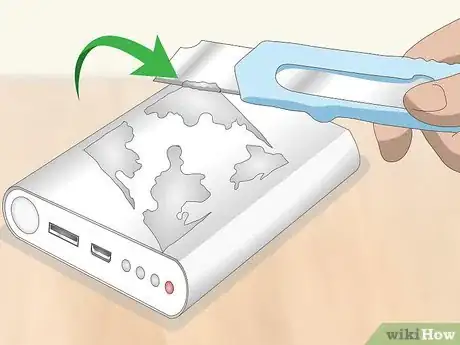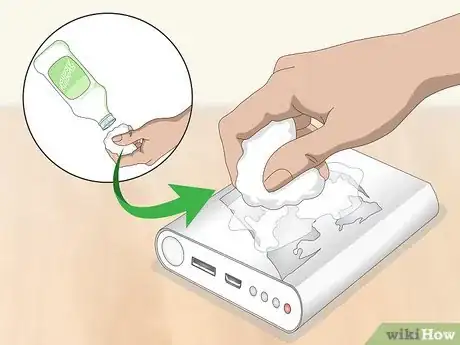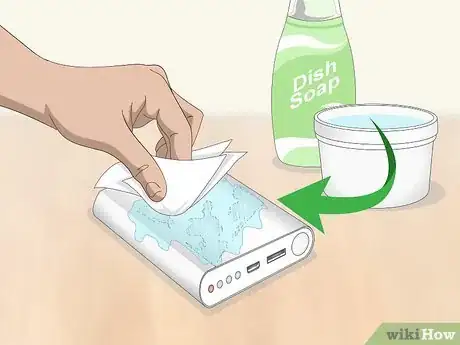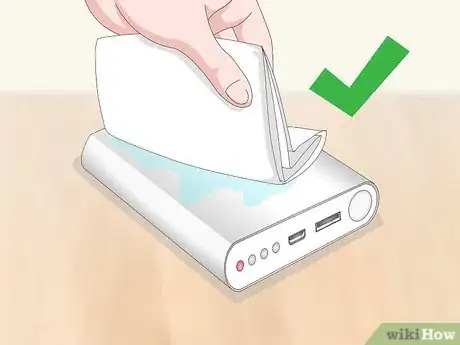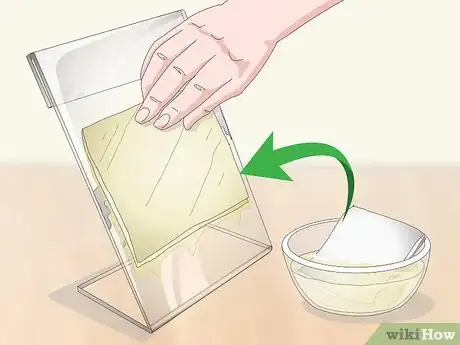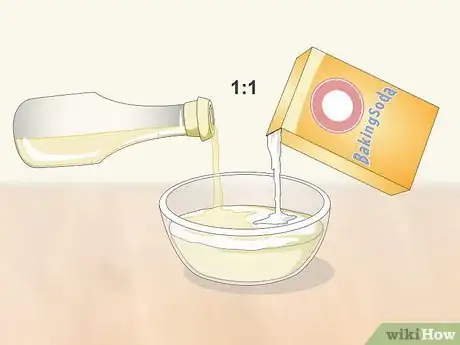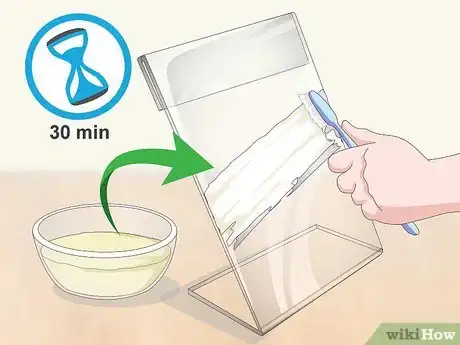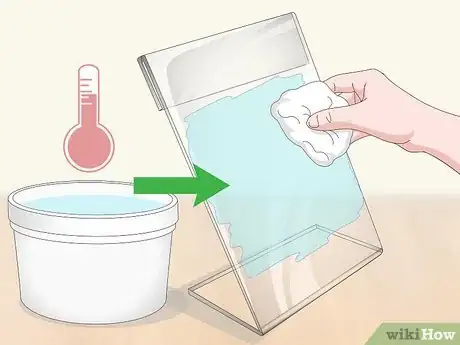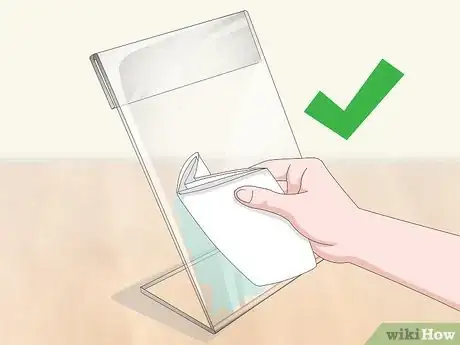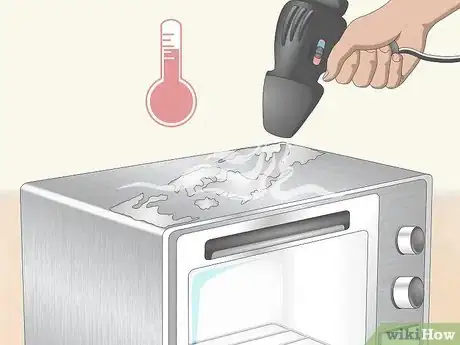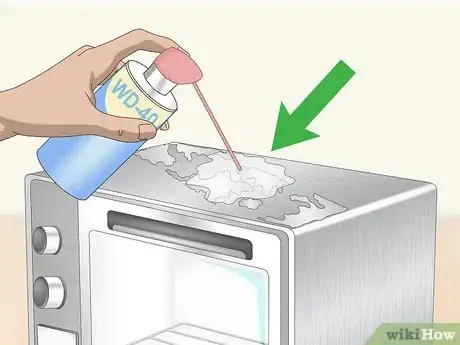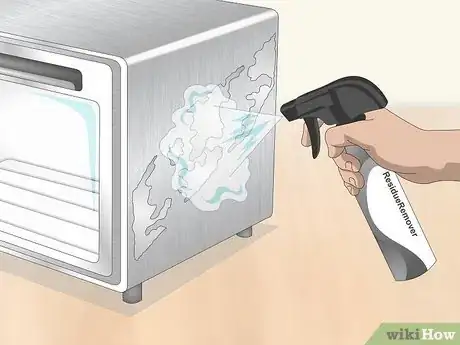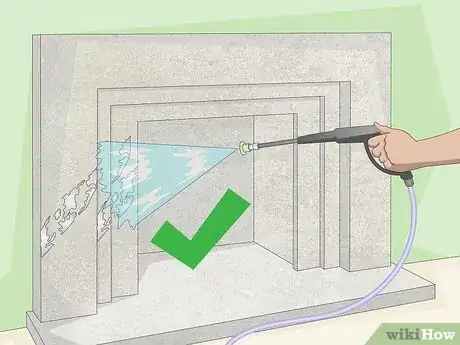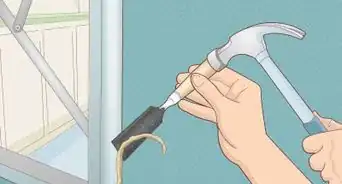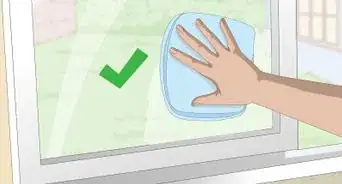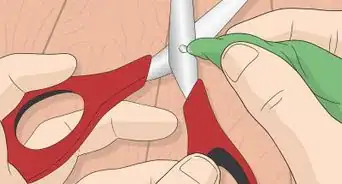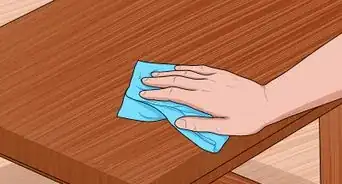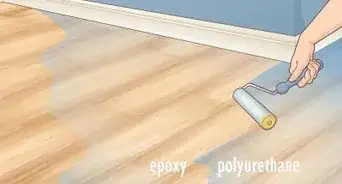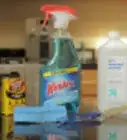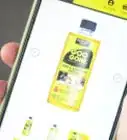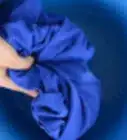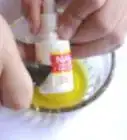This article was co-authored by Michelle Driscoll, MPH. Michelle Driscoll is the Owner of Mulberry Maids, which is based in Fort Collins, Colorado. With five years of experience, her business specializes in cleaning homes and small offices. She holds a Masters in Public Health from the Colorado School of Public Health. Additionally, Mulberry Maids has an A+ rating from the Better Business Bureau.
There are 7 references cited in this article, which can be found at the bottom of the page.
This article has been viewed 271,810 times.
Duct tape is a powerful adhesive, but it leaves behind a strong, sticky residue. Fortunately, there are tricks you can use to remove most residue with ease. Both rubbing alcohol and cooking oil are effective methods that can be followed up with soap and warm water to clean most surfaces. For stubborn stains, heat the area up with a hairdryer or apply an alternative cleaning product and your surface will soon be back to normal again.
Steps
Cleaning with Rubbing Alcohol
-
1Scrape the residue off with a dull blade. A butter knife is ideal, but you may also use a putty knife or a razor with an attached guard. Hold the blade flat against the surface and slowly slide the knife over it to scrape off the residue.[1]
- Be gentle to avoid scratching the surface. If you’re worried about scratches, skip scraping.
-
2Soak a soft cloth in rubbing alcohol and rub at the area. Dampen the cloth with isopropyl rubbing alcohol from the medical section at any drug or general store. Make sure the cloth is clean and soft to avoid damaging the surface you’re treating. Then, gently rub the cloth back and forth over the area until the adhesive comes off. The combination of the rubbing alcohol and friction from rubbing will remove most of it.[2]
- Acetone or nail polish remover may be used instead, but are more likely to damage painted surfaces.
Advertisement -
3Scrub the area with a mixture of dish soap and warm water. Place about a tablespoon of liquid dish detergent in two cups of water and stir until the mixture is bubbly. Then, dip a soft cloth into the soapy water and use it to gently scrub the residue. Keep rubbing the area until it no longer feels slippery or sticky to the touch.[3]
- Any gentle or medium-strength soap can be used. Avoid ones that are designed for grease and other tough stains.
-
4Dry the surface with a cloth. Rub the surface with a clean cloth or paper towel to absorb the water. The surface should no longer feel rough or sticky from the residue.
Treating Residue with Cooking Oil
-
1Soak a paper towel in cooking oil and lay it over the residue. Dab a paper towel into any type of cooking oil you have on hand. Lay the paper towel over the residue, then lift it after a few minutes. You can then rub or scrape the residue to get most of it off.[4]
- Other oily products are also effective, such as baby oil, peanut butter, or mayonnaise.
- Be careful around absorbent material such as carpeting and clothing. The oil may cause stains. If you’re concerned, try a baking soda paste instead.
-
2
-
3Apply the paste and let it rest for 30 minutes. Dip something soft, such as a cloth or old toothbrush, into the paste. Transfer it over to the surface you’re treating and spread it across the residue. Come back within 30 minutes to an hour to finish cleaning.[7]
-
4Wash off the paste with warm water. Get a clean cloth and dampen it in warm water. The remaining residue will likely come off as you rub it with the damp cloth.
-
5Dry the surface with a cloth. Use a soft cloth or paper towel to dry the water and check for any remaining residue. You may also use a knife or paint scraper to loosen any remaining residue.
Removing Stubborn Residue
-
1Heat the residue with a hairdryer for a quick removal. Aim the hairdryer at the residue to soften it. After a minute, it should be heated enough to remove. Scrape it off carefully with a knife or other implement. If it doesn’t come off all the way, switch to a different treatment.
-
2Spray WD-40 to treat metal surfaces. WD-40 is available at most general and home improvement stores. You can spray it directly onto areas with a lot of residue or dampen a terry cloth to treat smaller patches of residue. Leave it on for a minute, then scrub it off with soap and water.[8]
- WD-40 is perfect for surfaces such as cars. Read the warnings on the canister to avoid using it on surfaces that it’ll stain.
- Vaseline or car wax works as an alternative to WD-40.[9]
-
3Apply a commercial residue remover for a stronger treatment. These products are also available at general stores. There are brands out there designed to remove the residue from commercial tape. Follow the directions on the label and the product will also work well for you at home.[10]
-
4Use water pressure or sandblasting to clean rock and concrete. This can only be done on strong construction materials such as rock, brick, and concrete. Aim a high-pressure water system or sandblaster at the material. Briefly turn it on and off until the residue is gone.
- Be very careful when doing this. These machines can leave marks on most surfaces.
Community Q&A
-
QuestionWhat gets tape residue off of plastic?
 Community AnswerTry using some rubbing alcohol first; avoid acetone or nail polish remover, as this may damage some types of plastics. If that doesn't work, try some dish soap or olive oil. After that, use a damp cloth and rubbing alcohol to wipe off any residue.
Community AnswerTry using some rubbing alcohol first; avoid acetone or nail polish remover, as this may damage some types of plastics. If that doesn't work, try some dish soap or olive oil. After that, use a damp cloth and rubbing alcohol to wipe off any residue. -
QuestionHow do you get duct tape residue off fabric?
 Community AnswerApply some hand sanitizer to the residue, then try to rub it off. Repeat this a few more times until most of the residue is gone. Next, spray some laundry stain remover, wait 5 to 10 minutes, then launder the fabric as usual.
Community AnswerApply some hand sanitizer to the residue, then try to rub it off. Repeat this a few more times until most of the residue is gone. Next, spray some laundry stain remover, wait 5 to 10 minutes, then launder the fabric as usual.
wikiHow Video: How to Remove Duct Tape Residue
Warnings
- Use caution when scraping residue with blade so you don’t scratch or damage the surface.⧼thumbs_response⧽
Things You’ll Need
Cleaning with Rubbing Alcohol
- Butter knife or dull blade
- Rubbing alcohol
- Soft cloth
- Liquid dish soap
- Water
- Small bowl
Treating Residue with Cooking Oil
- Coconut oil or another cooking oil
- Paper towel
- Baking soda
- Small bowl
- Soft cloth or toothbrush
- Water
Removing Stubborn Residue
- Hairdryer
- WD-40
- Commercial residue remover
- Water pressure system or sandblaster if necessary
References
- ↑ https://removeandreplace.com/2014/04/29/5-ways-to-remove-tape-duct-tape-or-masking-residue-from-glass/
- ↑ https://itstillruns.com/way-tape-residue-car-body-5136188.html
- ↑ http://animals.mom.me/how-to-remove-duct-tape-from-cat-fur-12458440.html
- ↑ https://www.bobvila.com/articles/how-to-remove-sticker-residue/
- ↑ https://www.mnn.com/lifestyle/recycling/blogs/how-to-remove-label-glue-from-glass-easily-and-naturally
- ↑ https://www.thisoldhouse.com/ideas/10-uses-baking-soda
- ↑ https://www.mnn.com/lifestyle/recycling/blogs/how-to-remove-label-glue-from-glass-easily-and-naturally
- ↑ https://removeandreplace.com/2014/04/29/5-ways-to-remove-tape-duct-tape-or-masking-residue-from-glass/
- ↑ https://www.doityourself.com/stry/how-to-remove-excess-duct-tape-sticky-residue
About This Article
To remove duct tape residue, try using the edge of a credit card. Hold the edge parallel to the surface you are working on, and slowly scrape up the tape residue with it. You can also remove duct tape residue using a washcloth and warm water. Just scrub the residue with the damp cloth using circular motions until it comes off. If it won't come off, use rubbing alcohol instead of water. For really stubborn duct tape residue, use a hairdryer on the highest setting to soften the residue so it's easier to rub off. Aim the hairdryer at the residue and move it back and forth for a few minutes. Then wipe the softened residue off with a towel. For tips from our Commercial Cleaner reviewer on how to use baby oil or peanut butter to get rid of duct tape residue, read on!
